UT Engineering Students on Track to Maintain Legacy of Longhorn Racing
By Dom Bejarano
Reporting Texas
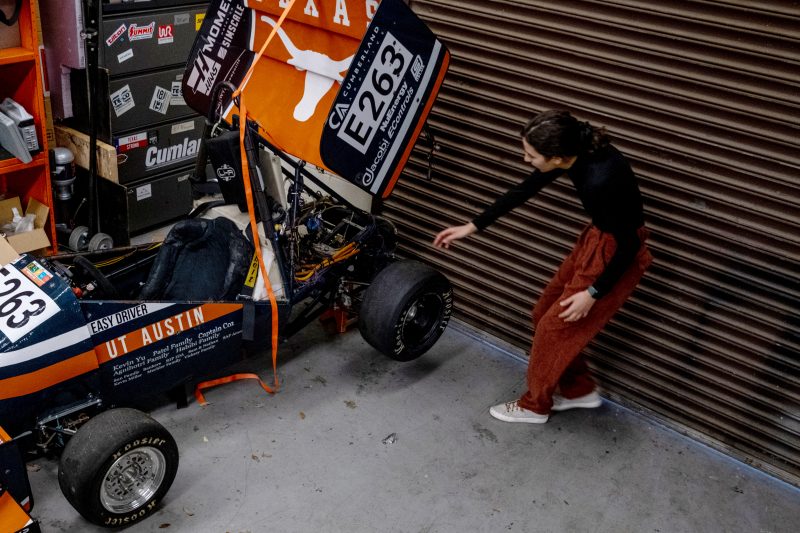
Longhorn Racing President Andrea Kalani points out where the motors will go on the team’s car at the University of Texas at Austin in February. Rush Skinner/Reporting Texas
On a hot May day in 1980, several dozen engineering students from around the country gathered in a parking lot outside the University of Texas at Austin’s baseball field. UT’s Cockrell School of Engineering had invited the students to race cars that they had designed against attendees from other colleges. The event was the first Formula Society of Automotive Engineers competition in the U.S.
The team of UT engineering students at that competition would soon adopt the moniker Longhorn Racing. Thirty-three years later Longhorn Racing continues to design, fabricate and test cars for competitions in Formula SAE automotive events around the country. At the Formula SAE competition in Michigan in 2022, Longhorn Racing’s combustion engine team placed tenth overall out of 55 teams, and the electric engine team won first place in the energy efficiency category.
“For almost 30 years (Longhorn Racing) was just ten guys in a garage making a car,” said former UT Engineering Professor Ron Matthews. Today more than 300 students are part of the Longhorn racing team.
Matthews left the team in 2021 after 43 years of being a mentor. Longhorn Racing is currently a student-led initiative with a rich legacy to uphold.
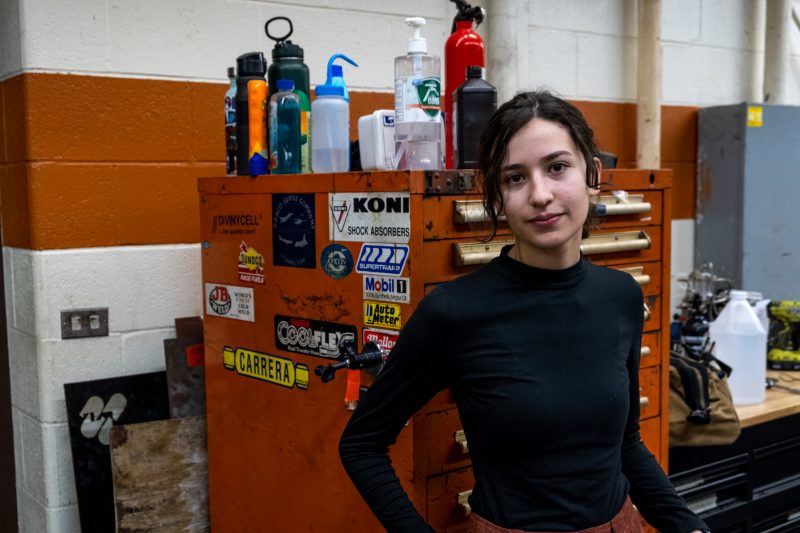
President of Longhorn Racing Andrea Kalani poses in front of a tool box in the engine and chassis room where the team works on building its cars. Kalani has to fit in meetings with investors, sponsors and students in between classes. Rush Skinner/Reporting Texas
In 2022 the organization elected Andrea Kalani, a third-year mechanical engineering student from Spring, president. Kalani said the team’s goal is to be in the top 10 at this year’s Formula SAE event and Formula Sun Grand Prix, which take place each summer.
“A lot of people think we are just racing. We are a technical organization, whether that’s for business or finance or engineering. We are here for the benefit of the students,” Kalani told Reporting Texas.
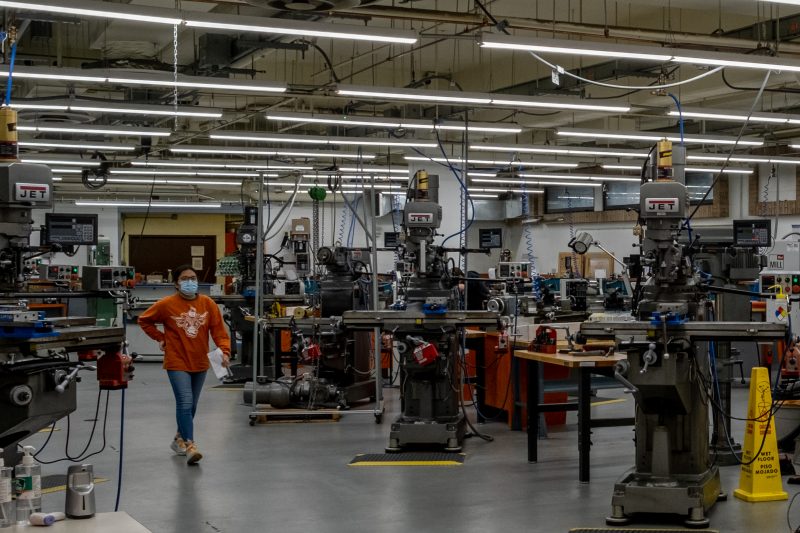
A member of the Longhorn Racing team walks past machinery where the race cars are built in the Engineering Teaching Center at the University of Texas at Austin. Rush Skinner/Reporting Texas
On a Friday evening in February, UT’s campus was mostly silent, but not the basement of the Engineer Teaching Center. Empty cans of Red Bull were strewn about the floor. Students, many donning safety goggles, milled about as heavy machinery rumbled and welders worked on parts of older disassembled cars that were scattered about.
Longhorn racing students don’t have the average student schedule, Kalani said as she walked around the bustling basement.
Kalani has to fit Longhorn Racing projects and meetings with sponsors, corporate investors, and students into her busy class schedule. She often ends her day at the machine shop in the Engineer Teaching Center working on Longhorn Racing projects.
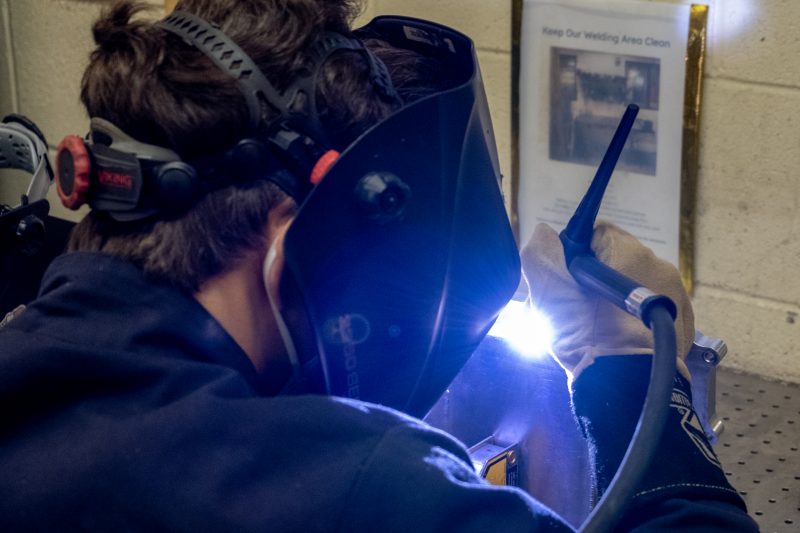
Tyler Watts welds billet aluminum after it was cut with a computer. Members are divided into three teams: combustion, electric and solar. Rush Skinner/Reporting Texas
The organization consists of three teams — the combustion team, which designs and builds combustion engines; the electric team, which builds innovative electric motors for a formula-style electric car; and the solar team, whose mission is to bring awareness to cutting edge solar powered alternatives.
In the fall semester students from the teams are in the design cycle where each team receives feedback from alumni and industry professionals. After winter break testing begins. Cars are unveiled in April, Kalani said. The teams then compete in the summer.
Competitions test UT students’ ability to render high quality machinery that is safe and powerful. At the Formula Sun competition in 2022, the technical inspection was the biggest barrier of entry — out of the 100 entrants, only 12 passed inspection.
Longhorn Racing relies on Kalani and the organization’s leadership to find investors. Cars cost $35,000 to build, and the organization’s budget is close to a quarter of a million dollars. Their newest corporate investor, Chevron, donated $100,000 this year. Kalani said the donation gave members a sigh of relief as funding is their biggest hurdle.
Sohan Agnihorti, vice president of Longhorn Racing and a driver for the electric car team, said he first learned about the organization when he was in high school. It’s a large part of why he chose to attend UT. Agnihorti said he hopes more businesses will donate to the organization.
“Our operating budget is around a quarter million a year,” Agnihorti said. “When you compare that to other top programs in the nation, a lot of those programs are well over a million dollars because of the grants they get from the school, so we are really competing with not a lot of resources but we are competing at the top level of competition.”
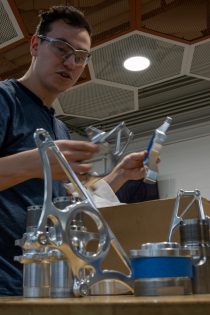
Jonathan Parra places finished parts on a table in the machine shop in February. Before the manufacturing process, each part had to be computer designed. Rush Skinner/Reporting Texas
Longhorn Racing members volunteer at elementary and high schools in Austin, where they lead after school programs and teach basic engineering principles.
“When we go to elementary schools in the Austin area, some of the girls will tell you that ‘engineering is never something I thought I could do,’ and that’s just a really cool part. You feel like you can be a role model,” Lani Hong, a freshman member of the organization, said.
About a third of Longhorn Racing members are female. Hong had no exposure to engineering or racing before joining the organization. She is now an integral part of the electric team and dedicates over 30 hours a week.
“You also become friends with the people on the team and they are my closest friends. It’s not just always focused on the car, it’s also focused on the people,” Hong said.
Sohan also has made many meaningful friendships and is proud to be a part of the organization’s legacy.
“We have the history here at UT and the knowledge to compete with the top teams, our goal is always to compete with them no matter the drawbacks or hardships,” he said.
As most students enter finals season, Longhorn Racing students will be unveiling their three cars on April 22nd. They were able to successfully meet a hasty deadline despite the winter freeze and working overtime during Spring Break. Drivers and engineers from each team have begun testing at local go kart tracks as they prepare to head into summer competitions.